Let's add some bowls in an empty glass.

Adding one....

Adding one again...

Now, the thing is that we can take one bowl outside and guess which bowl can we take outside first.
Is it the 3rd one? 2nd one ? or 1st one?
Yes, it is the 3rd one and it follows LIFO (Last In First Out)

So, we will remove in this way
So, using the linked List, we are going to

pop an item

also can prepend

Our stack is going to look like this
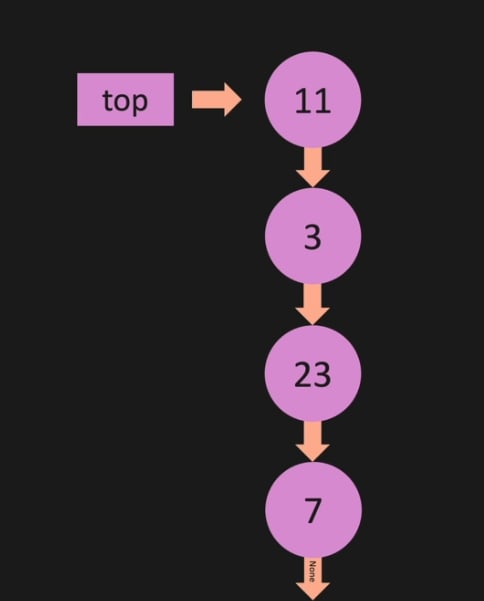
Constructor
First create a node
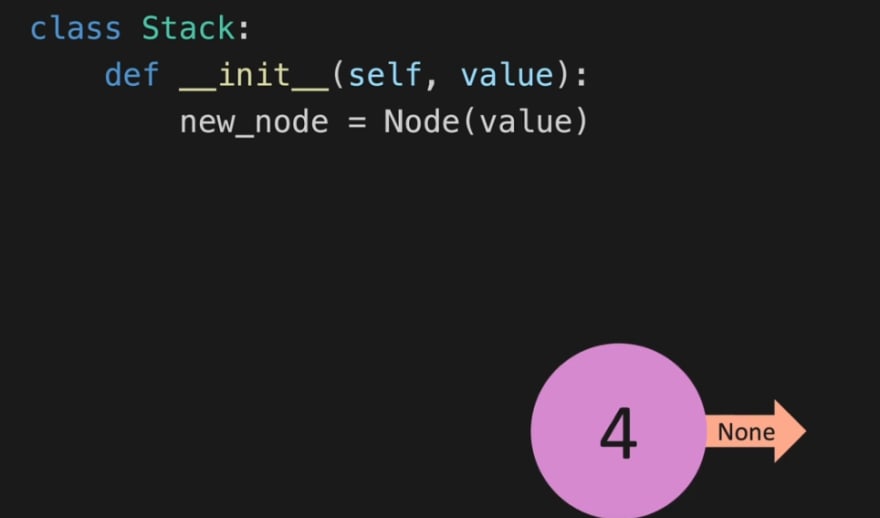
Setting top & bottom like this:

Although we are not going to care about the bottom and thus removing the bottom:
So, overall the constructor will look like this:
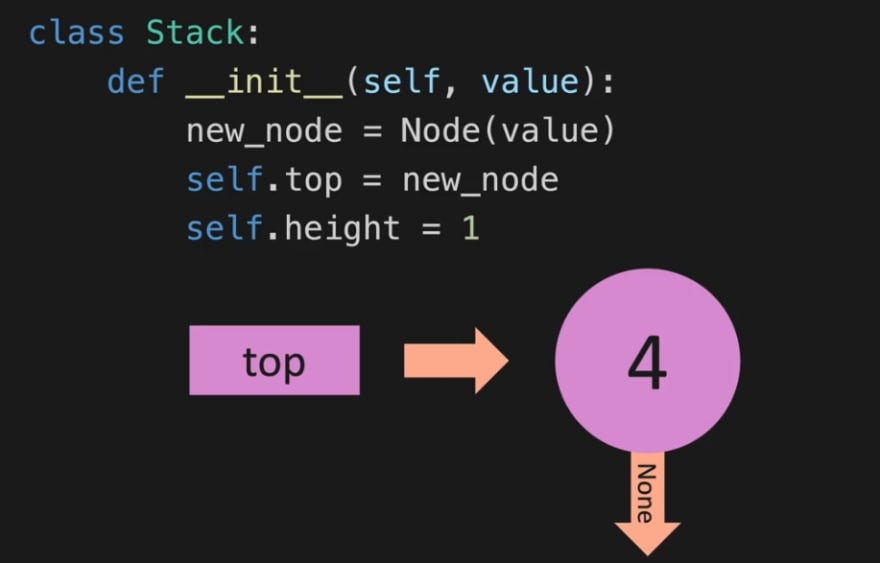
Code for that:
#Node class : Creates node
class Node:
def __init__(self, value):
self.value = value
self.next = None
#Creates a stack class
class Stack:
def __init__(self, value):
#creates a node by calling the Node class
new_node = Node(value)
#pointing the top to that node
self.top = new_node
#adding the length to 1
self.height = 1
#Prints the stack untill it finds None
def print_stack(self):
temp = self.top
while temp is not None:
print(temp.value)
temp = temp.next
#Creating a stack with node 4
my_stack = Stack(4)
#Printing the stack
my_stack.print_stack()
Push
Case 1:
When the stack is empty, we will add the node and assign it to the top also


case 2:
Adding node to an old stack.
Code for this:
class Node:
def __init__(self, value):
self.value = value
self.next = None
class Stack:
def __init__(self, value):
new_node = Node(value)
self.top = new_node
self.height = 1
def print_stack(self):
temp = self.top
while temp is not None:
print(temp.value)
temp = temp.next
#push method
def push(self, value):
new_node = Node(value)
#When there are no nodes in the stack
if self.height == 0:
self.top = new_node
#When there are nodes in the stack
else:
new_node.next = self.top
self.top = new_node
self.height += 1
#Creates a stack of 2
my_stack = Stack(2)
#pushing 1 to the stack
my_stack.push(1)
my_stack.print_stack()
Pop
Case: 1
when we have nothing in stack, we are not going to return anything.

Case 2:
When we have a stack and we are going to return the last value entered.
First setting temp to it.
class Node:
def __init__(self, value):
self.value = value
self.next = None
class Stack:
def __init__(self, value):
new_node = Node(value)
self.top = new_node
self.height = 1
def print_stack(self):
temp = self.top
while temp is not None:
print(temp.value)
temp = temp.next
def push(self, value):
new_node = Node(value)
if self.height == 0:
self.top = new_node
else:
new_node.next = self.top
self.top = new_node
self.height += 1
return True
def pop(self):
#when we have no nodes in the stack
if self.height == 0:
return None
#when we have nodes in the stack
temp = self.top
self.top = self.top.next
temp.next = None
self.height -= 1
return temp
#A stack of nodes 7,23,3,11
my_stack = Stack(7)
my_stack.push(23)
my_stack.push(3)
my_stack.push(11)
#poping a node from the stack. Note: pop returns the last value intered into the stack[last in first out]
print(my_stack.pop(), '\n')
my_stack.print_stack()





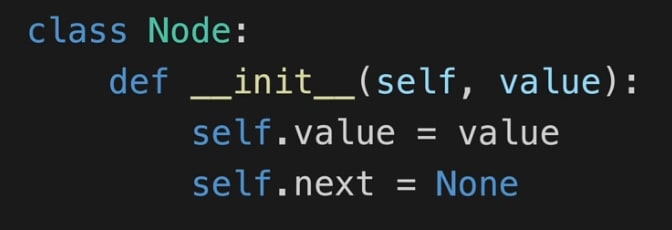

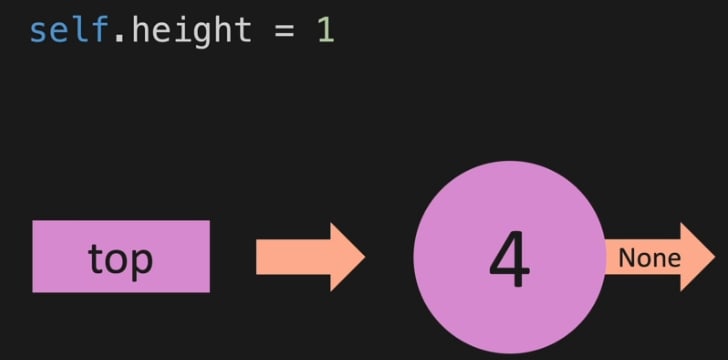



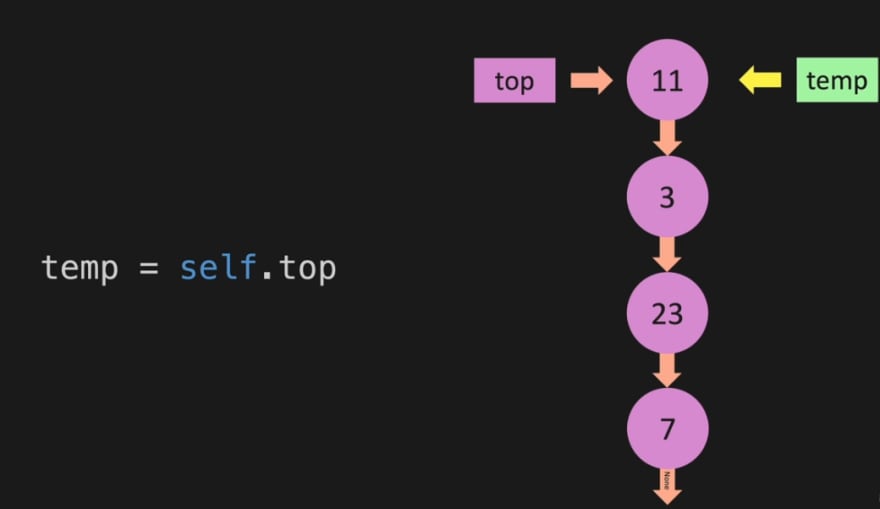
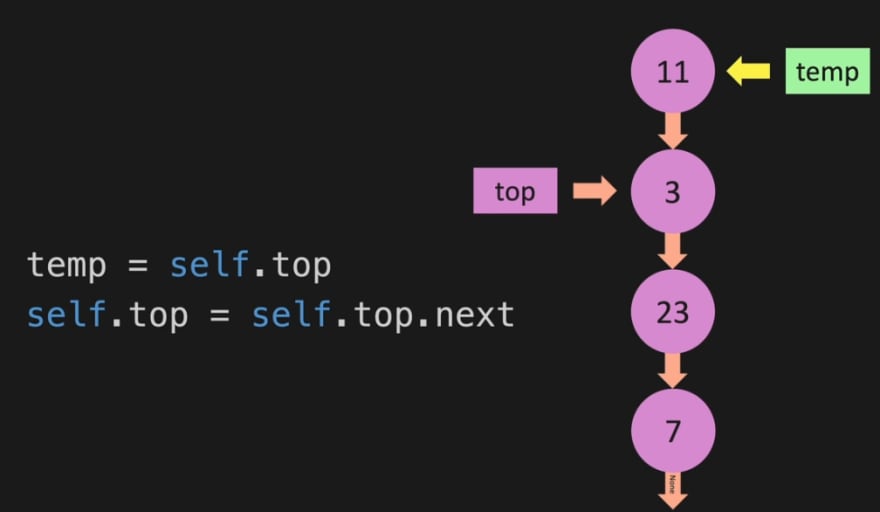







Latest comments (0)